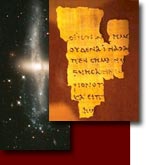| Site Map | Contacts | Links | Newsletter | |
Genesis:
Noah's Flood, Global or Local?
Noah is probably the same person as Ziusudra of Shuruppak in the Sumerian King List and Utnapishtim in the Gilgamesh Epic. The Sumerian and Babylonian flood story is very similar to Noah's flood in the Bible. In Sumerian the name of the flood hero is Ziusudra. The Sumerian flood story is found in the text entitled"Eridu Genesis" that starts off with a creation story. In Babylonian (Akkadian) the flood hero is named Utnapishtim. Dalley states, "it is just possible that an abbreviation of (Uta)-na'ish(tim) was pronounced 'Noah' in Palestine from very early times" (1989, 2). Just as my name is spelled differently in Greek or Hebrew, so too we can not expect the name for Noah or Adam to be spelled the same in a foreign language. The King Lists would put the flood about 2900 BC. Another very important flood story is Atrahasis because it parallels the first eleven chapters of Genesis. The Biblical story of Noah's flood is a beautiful chiastic structure with "God remembers Noah" (Genesis 8:1) as the pinnacle of the poem (Wenham 1987, 156; Kikawada & Quinn 1985, 104).
The Noahic flood was a local flood that covered all the known world at that time which was the Mesopotamian valley. When Luke 2:1 says that the whole world was taxed, it is not talking about the whole world as we know it which includes North America, South America, Australia, and Antarctica. In Luke 2 "world" means only the Roman empire around the Mediterranean Sea. There are many places in scripture where "all the earth" does not mean the whole globe as we know it. (See http://www.angelfire.com/pr/truth/flood-no.html) The same is true of Noah's flood. Geology shows no evidence of a world flood at Noah's time (see Six Flood Arguments Creationists Can't Answer) but archaeology has found a layer of mud that probably is from Noah's flood of 2900 BC. In the Mesopotamian valley (Young 1995).
Next - Wood From Noah's Ark?
Bibliography
